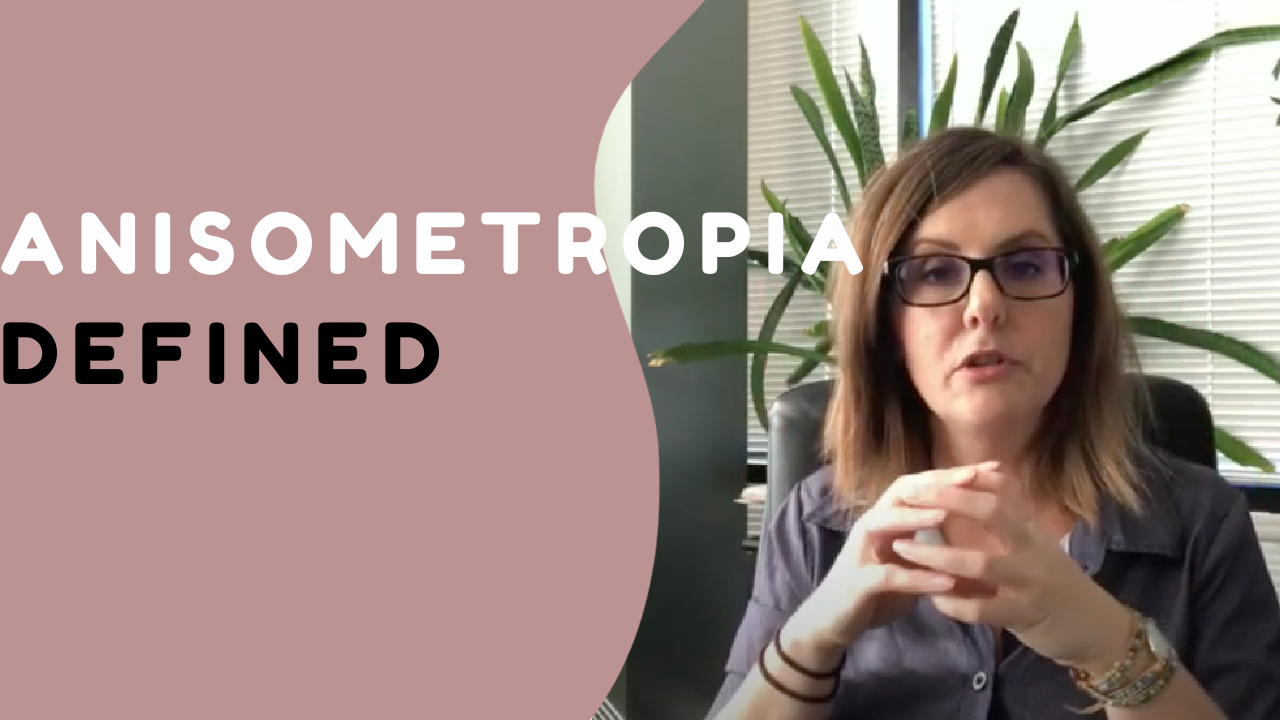Ever hear of Anisometropia? This condition is when eyes have varying refractive powers, causing eyes to focus unevenly. Anisometropia can exist in asymmetric curvature (astigmatism), asymmetric far-sightedness (hyperopia) or asymmetric near-sightedness (myopia). Diagnosing and treating the condition is important, going beyond just a prescription for glasses.
Anisometropia can cause amblyopia, or lazy eye, in younger children. Our brain sends messages to our eyes together, but if one eye has clearer images the brain will end up favoring using the eye with the lower refractive powers or prescription. The eye with unclear, fuzzy images ends up becoming ignored. Over time and if left untreated, this can lead to permanent vision problems. Some symptoms of Anisometric Amblyopia may include wandering eye, eyes that don’t seem to work in conjunction with one another, and poor depth perception.
In most cases, it is very hard to know if your child has Anisometropia. Typically, there are no outward signs of Anisometropia, unless strabismus exists, and it will be hard to tell if they are struggling with their vision. In most cases, the condition is unlikely to be discovered by a school vision screening or by a pediatrician unless strabismus exists or the asymmetry is dramatic. At Vision For Life, we can offer testing for Anisometropia as well as a treatment that will work for your child.
How to treat Anisometropia
Treating the patient with vision therapy and photo-syntonic light therapy is recommended and can be used in conjunction with balancing the refractive power of the eyes with a lens prescription. With vision therapy, our goal is to ensure the brain will want to utilize both eyes together as a team. Once the brain’s connection has been re-established, this may correct Anisometropia. It is important that a vision therapy treatment plan is followed and that a lens prescription is balanced. If strabismus is present, utilizing vision therapy as well as photo-syntonic light therapy is the recommended treatment.
Does Anisometropia ever go away completely?
When a child is treated at a younger age for Anisometropia, the treatment works better in restoring the brain-eye connection. With vision therapy and photo-syntonic light therapy at Vision For Life, it is our goal that your child will be seeing better soon. Some children, with vision therapy, may grow out of their need for prescription lenses. If you think your child may have Anisometropia, he or she will receive the best outcome if it’s addressed early.
Dr. Julie Steinhauer is a functional and developmental optometrist, with a focus on restorative and rehabilitative vision, syntonic phototherapy and binocular vision conditions.
If you believe your child may have Anisometropia, contact Vison For Life to schedule an appointment with us at (618) 288-1489. You can also learn more about Vision For Life by visiting our website at https://visionforlifeworks.com/.
